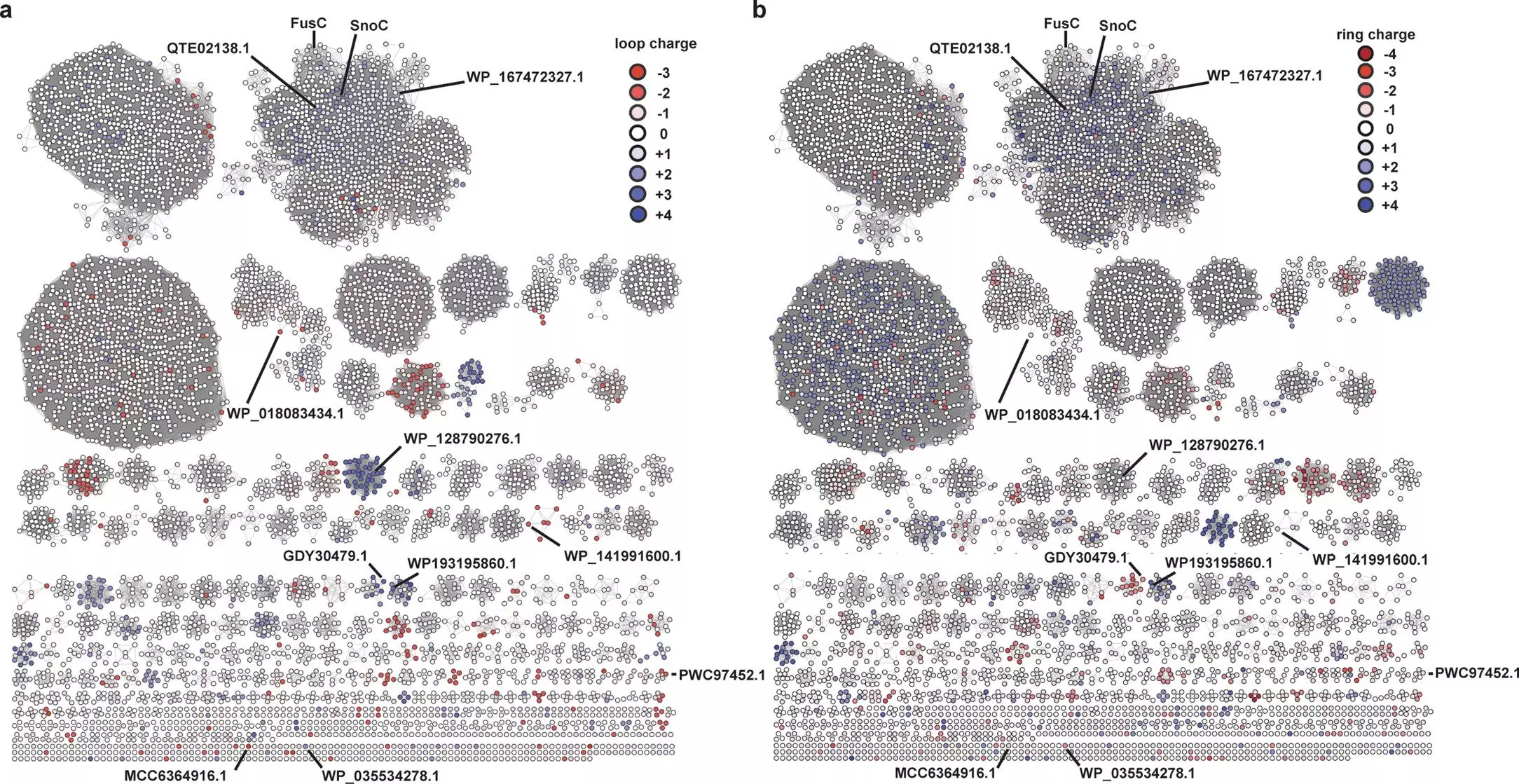Lasso peptides, a captivating class of molecules, have recently ignited interest in the realms of biotechnology and medicine. These ribosomally synthesized molecules, produced by bacteria, possess a unique lasso-like structure that not only sets them apart from traditional peptides but also endows them with a remarkable stability that allows them to thrive under extreme conditions. As researchers continue to peel back the layers of these complex substances, a new study sheds light on their biosynthesis and suggests transformative applications for drug development.
What makes lasso peptides so compelling is their distinctive structure: a linear amino acid sequence twisted and folded into a knotted form that resembles a slip knot. This intricate configuration, as noted by Susanna Barrett, a graduate student at the Mitchell lab, lends these peptides extraordinary stability. Such characteristics make them prime candidates for therapeutic applications, encompassing antibacterial, antiviral, and even anti-cancer properties.
These peptides originate from the combination of amino acids facilitated by ribosomes—a process characterized as ribosomal synthesis, bolstered further by post-translational modifications. The transformation from a linear precursor peptide to the characteristic lasso structure involves a duo of enzymatic players—a peptidase and a cyclase. This conversion is critical but has been challenging to illuminate in detail. The difficulty primarily arises from the enzymatic processes involved; many cyclases exhibit poor solubility and activity when isolated from their natural environments, thwarting efforts to study them at a molecular level.
Since their identification more than thirty years ago, the quest for understanding how these cyclases facilitate peptide folding has remained an ongoing challenge in the field. An exception arises with the characterization of FusC, a type of fusilassin cyclase, which became a crucial model for researchers in this domain. Despite the breakthroughs achieved with the purification of FusC, critical structural details about its interaction with lasso peptides were still lacking.
In a recent groundbreaking study, Barrett and her colleagues employed artificial intelligence, particularly the sophisticated program AlphaFold, to predict the structure of the FusC protein. This approach marked a significant advance, allowing researchers to venture into the enigmatic realm of cyclase structure. The integration of AI not only streamlined the process of identifying critical amino acids situated within the active site of the enzyme, but also facilitated in-depth molecular dynamics simulations. Such simulations offered insights into the peptide folding mechanism, exposing previously unseen atomic-level interactions that would have otherwise remained obscured.
Through their computational modeling and simulation work, the researchers discovered that the backwall region of the active site plays a crucial role in the folding process across various cyclases. Specifically, they identified the helix 11 region in FusC as integral to the enzymatic activity. By leveraging this knowledge, the team embarked on a cell-free biosynthesis trial, systematically modifying amino acids in the helix 11 region within the cyclase variants. Notably, they outlined a variant that demonstrated an ability to fold previously unmanageable lasso peptides, validating their computationally-derived models.
This study highlights an exhilarating intersection of biochemistry, AI, and biosynthesis, demonstrating how intricate molecular interactions govern the formation of these unique peptides. The implications of this discovery extend beyond a purely academic interest; these insights have significant potential for therapeutic applications.
Collaborating with Lassogen, a company based in San Diego, researchers are eyeing the development of engineered cyclases capable of generating new lasso peptides with enhanced therapeutic efficacy. For instance, they successfully modified a different cyclase, labeled McjC, to create a potent inhibitor targeting an integrin linked to cancer progression. This pivotal work underscores the potential for tailored peptide synthesis, allowing for the exploration of diverse lasso peptide libraries that could lead to more effective medicinal options.
As highlighted by Mark Burk, the CEO of Lassogen, expanding the diversity of lasso peptides through targeted enzyme engineering not only solves existing limitations posed by naturally occurring enzymes but also enriches the landscape of drug design. Consequently, lasso peptides could become a new frontier in targeted therapies, affording greater specificity and reduced side effects.
The team led by Douglas Mitchell emphasizes that their findings would have been unattainable without the synergy of advanced computational tools and biosynthetic techniques. Their efforts illustrate how interdisciplinary collaboration can amplify scientific innovation, heralding a new era in the production and utilization of lasso peptides. As research continues to unfold, these promising molecules may soon transition from laboratory curiosities to vital components of therapeutics, thereby reshaping the landscape of clinical drug development.


Leave a Reply